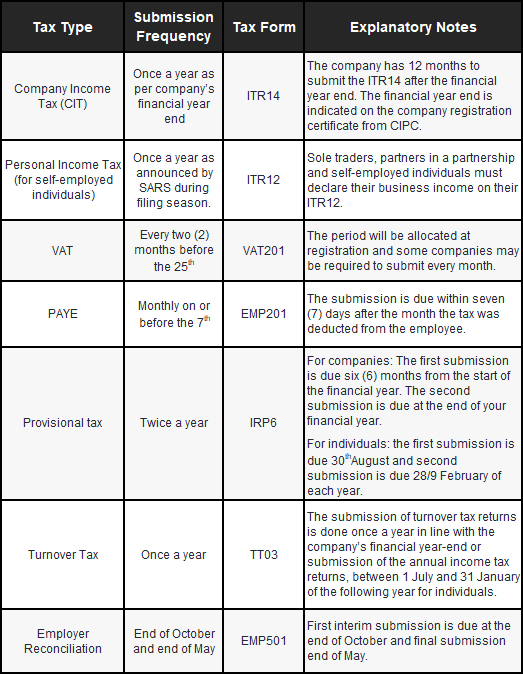
“…imposing administrative non-compliance penalties is to ensure the widest possible compliance with the provisions of a Tax Act … they are imposed impartially, consistently and proportionately to the seriousness and duration of the non-compliance.” (SARS)
The Tax Administration Act stipulates that SARS can issue administrative penalties for outstanding tax returns.
In previous years, penalties were only imposed on taxpayers with more than one tax return outstanding. Since December, due to changes in the Tax Administration Act, SARS can apply administrative penalties to taxpayers who have a single outstanding return.
As a result, hundreds of thousands of South African taxpayers have received administrative penalties from SARS this year, many of them facing tax debt of tens of thousands of rands, accumulated over many years.
When are penalties incurred?
SARS can raise administrative penalties if a taxpayer is non-compliant in a specific area of their tax affairs, including Personal Income Tax (PIT) and Corporate Income Tax (CIT), Pay as You Earn (PAYE) or value-added tax (VAT).
A percentage-based penalty is imposed when a payment is received late. To prevent a payment from being received late, the payment must be received into the SARS bank account on or before the due date.
SARS also imposes fixed amount administrative non-compliance penalties for outstanding returns and/or non-compliance for PIT or CIT. These include the once off PIT penalty imposed where the taxpayer submitted a return late as from 2020 year of assessment onwards.
There is also a recurring penalty for the failure to submit a return for PIT and CIT. The fixed amount penalty is based on a taxpayer’s taxable income and can range from R250 a month (where there is an assessed loss or no taxable income) up to R16,000 a month (where the taxable income exceeds R50 million) for each month that the non-compliance continues.
For PIT, the recurring penalty is imposed where the taxpayer failed to submit an income tax return for years of assessment from 2007 onwards, when that person has one or more income tax returns outstanding.
For CIT, the recurring penalty is imposed where the company has failed to submit an income tax return for years of assessment from 2009, where SARS has issued the company with a final demand and the company failed to submit the return within 21 business days of the final demand.
As such, penalties are now applied monthly for tax returns dating back many years.
Companies also face administrative penalties for PAYE. If an employer has failed to submit an EMP501 reconciliation declaration on time, an admin penalty of 1% per month over 10 months, based on the employer’s liability over 12 months, is levied.
What are the costs of the penalties?
Percentage-based penalties are often steep, such as the 10% late payment penalty on VAT or PAYE, or the penalty of 1% over 10 months where an EMP501 was not submitted in time.
But it is the recurring penalties levied every month that really snowball. This is because SARS will keep penalising non-compliant taxpayers month after month until the outstanding returns are submitted, or up to a maximum of 35 months, if the taxpayer’s address is known, or 47 months if the taxpayer’s address is unknown.
Even at the lowest monthly admin penalty of R250, just one return outstanding for 35 months will have already racked up a tax debt of almost R9,000, not including interest.
Remember, unpaid penalties will also attract interest for each month they remain outstanding.
If you ignore Admin Penalty notifications from SARS, it will keep levying these penalties. In addition, the individual or company will have a non-compliance tax status. If a tax refund is due to the taxpayer, SARS will not pay the refund until any outstanding penalties are paid. Penalties can also only be offset against a refund after approval of a formal request to SARS.
Ultimately, if the admin penalty is not paid, SARS also can appoint an agent, such as a bank or employer, to collect the money on its behalf.
What should you do if you already have admin penalties?
If you have admin penalties, you need to do two things immediately:
- Correct the non-compliance by filing the outstanding return/s; and
- Pay the penalty on time or submit a request for remission of penalties.
Your accountant will be able to assist you with remedying the outstanding returns, including finding the outstanding documents, and the penalty payment. For example, if you are unable to pay any outstanding tax and penalties immediately, your accountant will help you enter into a repayment plan with SARS to pay it off.
However, if there were legitimate reasons for not filing an outstanding return, a taxpayer can dispute an administrative penalty through a request for remission to SARS for the penalty to be waived.
If you want to request a remission of the penalty from SARS, it is a good idea to rely on your accountant’s assistance. This is because a remission is only considered once the non-compliance has been remedied and where the taxpayer can show certain reasonable grounds, such as a first incidence non-compliance or if the duration of the non-compliance is less than five business days. Certain exceptional circumstances such as serious illness or accident, social disturbance or natural disasters will also be considered.
SARS says that administrative penalties will be “imposed impartially, consistently and proportionately to the seriousness and duration of the non-compliance,” so requests for remission are not always successful – or may result in only part of the penalties being reversed.
Avoiding penalties going forward
It has never been more important for individuals and companies to achieve and maintain tax compliance.
Taxpayers need to submit returns even if they are not earning an income and even if a company is dormant. In these cases, individuals and companies must submit zero returns to SARS or face mounting penalties. Where a company will remain dormant, consider deregistering the company with the Companies and Intellectual Property Commission (CIPC) and with SARS for the various types of tax.
When facing admin penalties now or in the future, the expertise and experience of your accountant or tax practitioner will be a key success factor in achieving and maintaining tax compliance.










